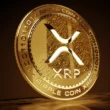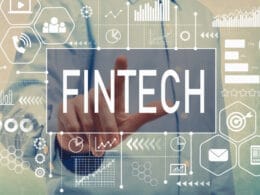Decentralized applications, like Blockchain technology, could be the next big thing in technology. This is because dApps have increased computing power methods and distinctive features — they are already transforming several industries and reinventing various business models.
dApps are known for having a more incentivized structure than most current software models. Let’s have a look at how they work to understand their growing popularity.
What is a decentralized application?
A decentralized application (dApp) is any program that runs on a P2P (peer-to-peer) network of computers or a blockchain. This means that the code isn’t stored in a single, centralized place. This has a major implication in terms of how it runs. There is no single corporation or entity that owns a decentralized app. Instead, it uses a distributed ledger with a large number of users to run its program.
Many cryptocurrencies and blockchain startups are creating blockchain-based decentralized applications. Consider the blockchain as an environment separate from conventional IT development platforms. Decentralized apps, like with cryptocurrencies, rely on this distributed and decentralized setting for support.
Companies have developed a variety of decentralized apps, including gaming apps, banking apps, and other types of functional dApps. What all the dApps have in common is that the underlying resources are held in a consensus model among stakeholders rather than being isolated.
What are the key features of dApps?
- Open Source
The application’s code structure should generally be open to public research. It should have its own governance system, with all changes decided by the majority of users.
- Decentralized
The data from the app should be kept in a decentralized and public blockchain network, and this is to ensure that that control does not fall into the hands of a centralized authority.
- Rewards
Within the blockchain, validators use their human efforts, use electricity and their computing knowledge, and thus must be given incentives. The generally recognized currency is cryptographic tokens.
- Protocol
To provide proof of value, the decentralized app’s community must agree on a cryptographic technique. Bitcoin and Ethereum, for example, both use Proof of Work (PoW).
Process of developing a dApp
Step 1: Create a whitepaper describing the dApp and its features. Here, you will outline the development concept and also include a functioning prototype.
Step 2: Based on your whitepaper, sell the initial tokens.
Step 3: Start your initial coin offering (ICO). Spread the dApp ownership stake.
Step 4: Launch and implement your dApp. Here you invest the funds in the creation and deployment of the dApp.
Top platforms for developing dApps
- Ethereum
The Ethereum blockchain platform has most of the tools you’ll need to create dApps, including an advanced smart contracts architecture and Solidity, a JavaScript-like programming language (Dapp-aware). Ethereum is the most used platform for developing dApps. Solidity, Ethereum’s native programming language, enabling developers to create smart contracts using the Ethereum Virtual Machine (EVM).
- EOS
For dApp creation, EOS is a recommended and effective blockchain platform. EOS offers dApp developers a straightforward option for app hosting, smart contract execution, and other operating systems such as services. EOS allows developers to create full-fledged dApps. It is a decentralized platform, and this means that anyone may create a decentralized application (dApp) and execute it on the EOS blockchain platform. It functions similarly to an app store, with the exception of decentralization.
Smart contracts are used by dApps to power themselves. Smart contracts, on the other hand, are not required with EOS. It leverages dApp transactions, which are more active than smart contracts.
- Tron
It is unlike any other cryptocurrency because its architecture is developed for a decentralized entertainment investment platform. It was developed with a specific goal in mind and included protocols, a blockchain explorer, and its own coin, Tronix (TRX). The process of constructing a dApp utilizing the TRON Blockchain explorer is known as TRON dApp development.
It is not, however, completely secure, as a genuinely decentralized network would be because if the validators work together, users can still be locked out.
What are the benefits of using dApp?
- dApp has built-in security. Because they often keep sensitive data on a blockchain, dApps are built to protect against any intrusion by anyone attempting to alter that data or restrict any of the content.
- dApps integrate easily with cryptocurrencies. dApps accept incoming transactions via cryptocurrencies thus used to reward content creators and motivate content creators, and possibly verifies them through mining.
- dApps are resistant to corporate intervention. Many traditional applications rely on their creators or some other central authority to handle transactions and make choices about the platform’s structure, but once launched, dApps are completely self-contained.
- dApps have full potential for innovation. The inherent freedom of these apps from outside influence has made them more popular. People can’t wait to see how the technology develops as more software developers get interested in dApps.
What are the drawbacks of using dApps?
- dApp’s can be more difficult to maintain. This is because code and data that are published to the blockchain are difficult to modify. Even if defects or security hazards are discovered in an older version, it’s difficult for developers to make modifications.
- They have a significant performance overhead, and scalability is difficult. Every node runs and stores every transaction in order to reach the degree of security, integrity, transparency, and reliability that Ethereum strives to. Furthermore, proof-of-work demands a lot of time.
- dApps suffer from network congestion. In the existing model, if a single dApp consumes too many computational resources, the entire network becomes clogged. The network can only handle roughly 10-15 transactions per second at the moment. If transactions are put in faster, the pool of unconfirmed transactions would quickly grow.
Conclusion
Blockchain technology is changing every day, and more innovations are being developed. One of the byproducts is dApps, which provides safe, open-source software for regular people and companies. There are a number of platforms used to develop dApps, such as Ethereum, EOS, and Tron. As the number of dApps grows and more innovations join the market, it’s more vital to grasp the benefits and drawbacks of using them.








